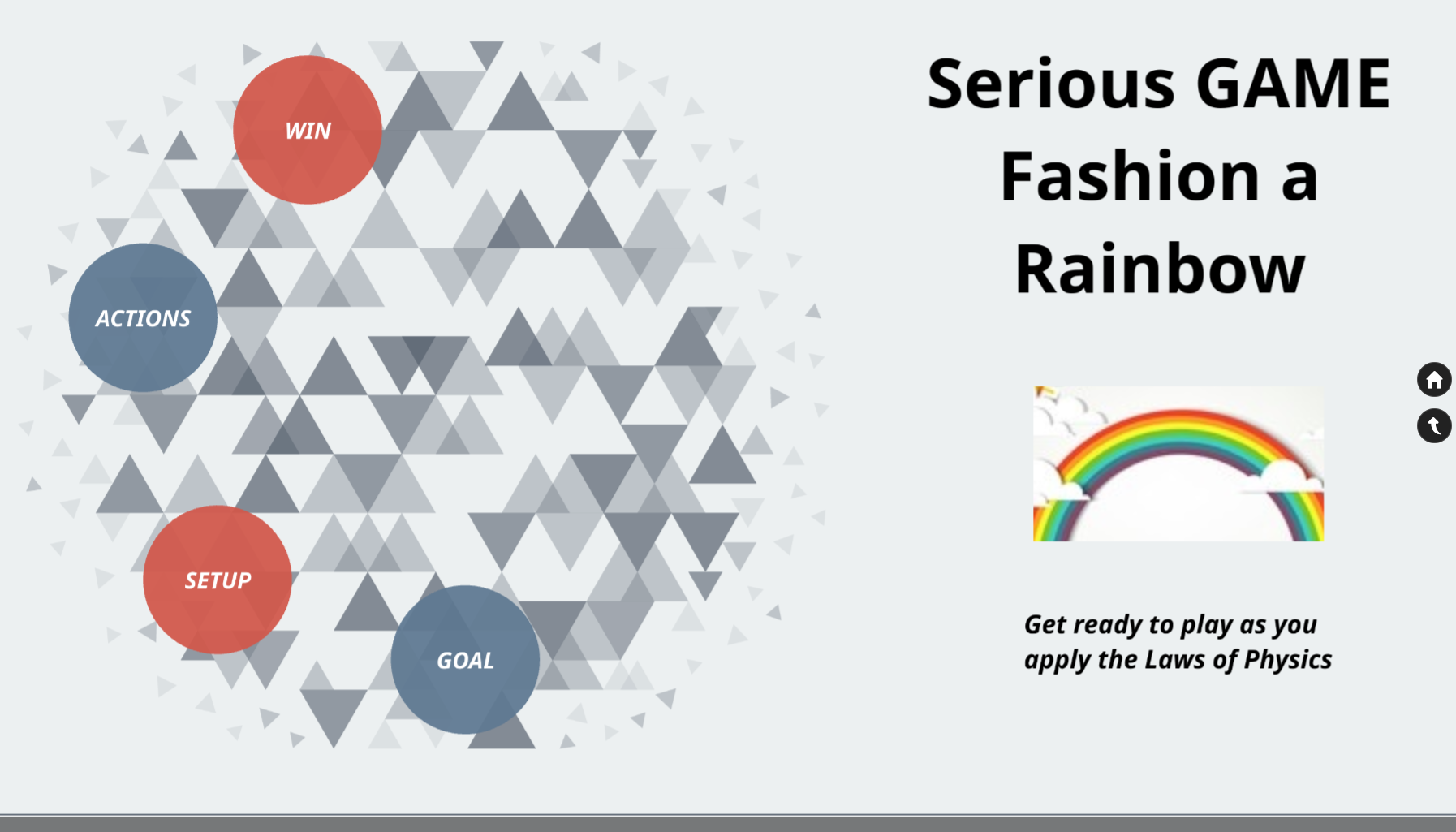Analog Game Design and Prototype
Design Presentation (Prezi):
Fashion a Rainbow by kahina morisset on Prezi Next

VIEW PDF File:
Feedback
============
Cooperation is helpful though I don’t know that it is relating to the champion recognition (that would be competition). Rather cooperation would instill a better group sense of building the rainbow over the game. The added element of competition does go against the spirit of cooperative work but works better than a collaborative approach (collaboration with competition can be done but it is much harder to parse out (and players don’t always make that distinction easily), particularly when issues arise of whether to contribute (i.e. placing a card that a player doesn’t know how to use for other players to use) or not because your contribution will help someone else get ahead but you need to help the group move ahead).
Time is a good element in general as it does keep a game moving along (the missing Time element from Monopoly and Risk for example are why so many people get frustrated or don’t play — another good example of a game with time is Chess – True Chess games utilize a timer for similar reasons, to keep the game moving forward and to instill quick thinking). I don’t know that time, however, encourages the contribution of all, I believe that is more the social mechanics rather than time. Time itself applies tension to gameplay – which when done correctly is useful (it can be applied incorrectly which causes frustration and disinterest in learners as it can emphasize failure). Time in itelf as I’ve read in your instructions isn’t tied to the cooperative elements, but is tied to the competitive – where other players can analyze the answers to determine correct/incorrect choices. If the time limit were also placed on other players for this, time would be a bit more integrated.